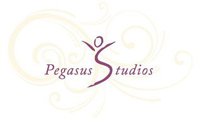Motivating children is one thing… keeping them motivated
during the rough times or when they are deep in the middle of a project, like
preparing for a ballet exam, is another thing. So, how do you help your child
get through that dip, the rough patch in the middle, to keep working hard and
push through to the other side? We’ve compiled some resources and tips from
various places for this blog entry for you – they’ve been helpful to the
teachers here at Pegasus and we hope that you may find a little nugget that can
be helpful to you as well.
To begin with, these are the two main types of motivation:
·
Intrinsically
motivated “for its own sake, for the enjoyment it provides, the learning it
permits or the feelings of accomplishment it evokes”. (Mark Lepper 1988)*
·
Extrinsically
motivated – “in order to obtain some reward or avoid some punishment external
to the activity itself”. (grades, stickers, teacher approval (Lepper).
*The first one, intrinsically, is much more beneficial in
the long run as it will give them the skills to become motivated in any
situation.
According to Jere Brophy (1987) motivation to learn is a
competence acquired through general experience but stimulated through modeling,
communication of expectations and direct instruction or socialization by
significant others (parents and teacher).
Home environment shapes the initial attitudes they develop toward
learning. When parents nurture their children’s natural curiosity about the
world, welcoming their questions, encouraging exploration and familiarizing
them with resources that can enlarge their world – the message is that learning
is worthwhile and fun and satisfying. (www.kidsource.com)
One of the most important aspects of keeping children (or
anyone for that matter) motivated is the ability to set personal goals. Sure,
your child may be working towards a ballet exam, but if you can help them set
up their own goals within that – for example: working towards a specific
exercise that is challenging for them, using the exam as a way to practice
performance skills for the upcoming recital, practicing the ability to learn
and remember choreography, etc. – goals that speak directly to their own
personal bests, their own personal desires to be in that situation and their
own personal strengths. This process not only makes the larger goal seem more
achievable but it also helps to keep the larger goal in focus as sometimes it
can get lost because of its size. For a child, being able to clearly see how
their activities are applicable to their life is key. (parentingideas.com.au)
Strategies parents can use to help children remain more fully
intrinsically motivated.
·
Provide environment that allows children to
freely explore and to see the effect of their actions.
·
Allow children ample time when working to allow
for persistence. When children are deeply involved with an activity, make sure
that they can finish without interruption.
Resist the natural urge to help
·
Provide many opportunities for children and
adults to explore together and interact directly. This lets you observe, model
and encourage your child.
·
Provides situations that give children an acceptable
challenge. Activities that are slightly
difficult for the child will be more motivating and provide for stronger
feelings of success when accomplished.
·
Give children opportunities to evaluate their
own accomplishments. Rather than stating that you think they have done a good
job, ask them what they think of their work. “What do you think?” (www.nasponline.org/resources/home_school/earlychildmotiv_ho.aspx)
For the older child,
this is an excerpt from a great book:
From the book; Dr. Karyn’s
Guide to the Teen Years. By Dr. Karyn
Gordon
How to Help your teen be a motivated student;
Modeling is very important – if you love to learn, they are
likely to as well;
o
How to help; focus on their efforts, not on the
end results.
o
Praise and affirm their effort when you see it.
o
Don’t over function. If parents are highly anxious about their
teen’s school work and performance, there is a strong chance your teen will
under function in reaction. Let them own their school experience.
o
Ask what they are learning and studying. Invite them to discuss some of the things
that have interested them
o
Ask if they need any help Let them know you are
available if they need any support.
o
If they show an interest in a career choice, do
activities with them that might further excite them about that field.
o
Look for everyday events and family trips to
inspire a love of learning.
o
Get solution-focused and brainstorm with them
about what has worked in the past regarding their motivation
-
The Key is to partner with your teens and not
micromanage them. You want to help your
teen discover the unique equation that helps them be focused and efficient.
The resources in this article are a great
source of information, much more than we’ve provided here. Check them out for
more detailed information on this subject.



